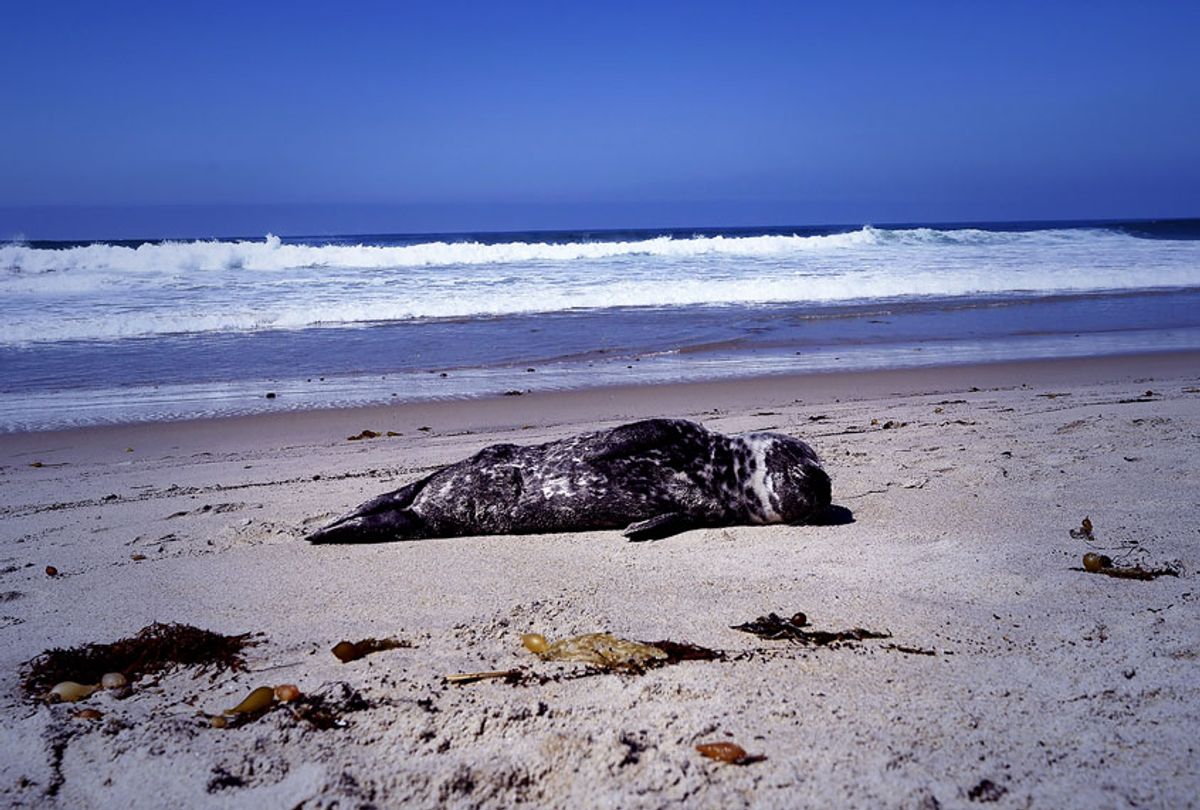Waters off the coast of California are acidifying twice as fast than the rate of the rest of the oceans, according to a study published in Nature Geosciences on Monday.
Scientists analyzed nearly 2,000 shells of foraminifera — microscopic, planktonic animals — from the seafloor in the Santa Barbara Basin. When foraminifera die, their shells turn into thick sediment on the ocean floor, making it possible for scientists to track their changes over time. Specifically, these shells are preserved almost perfectly because there is no oxygen at the bottom of the Santa Barbara Basin, which is located between the Santa Cruz and Santa Rosa islands.
While the area has been used for research over longer periods of time, lead author Emily Osborne — who is a scientist in the National Oceanic and Atmospheric Administration’s ocean acidification program — wanted to trace changes in the sediment over the last 100 years to see what the impact on the shells has been from human-induced carbon emissions.
“I was really interested in trying to better understand the impacts that human-sourced emissions have had on the oceans,” Osborne told Salon.
Specifically, Obsborne and her team used the thickness of the shells as a proxy to estimate past pH levels in the ocean and the effect they had on the shells. It is more difficult for shellfish to build their shells in a more acidic ocean. Previously, Salon reported on how scientists believe ocean acidification is what wiped out many dinosaurs and marine life 66 million years ago.
Obsborne and scientists measured shells that represented deposits dating back to 1895, and found that waters off the California coast experienced a 0.21 decline in pH over a 100-year period (the more acidic the water is, the lower the pH level). The scientists looked at data estimating acidification in the oceans worldwide, and determined that this is more than double the rate of what is happening elsewhere.
The reason, according to Osborne, is a mix of California’s coastal upwelling — which is a natural occurrence — and human activities that are responsible for the rise in greenhouse gases in our atmosphere.
“When I take a step back and look at 100 years or so of the data I generated, the very clear trend that pops out is the overall decline in the shell-wall thickness which is driven by human-created emissions entering in the system,” Osborne said. “Second to that is the natural variable, the upwelling which is a natural stressor but being intensified as a result of the anthropogenic OA (ocean acidification) signal.”
The upwelling process, formally known as the Pacific Decadal Oscillation, is a natural warming and cooling cycle. However, it’s amplified by human-caused carbon dioxide emissions because the more intense winds that travel across the ocean move carbon dioxide-rich waters upward toward the water’s surface off the California coast.
Scientists need to do more research to better understand how this rate of ocean acidification is affecting other parts of the marine ecosystem, but Osborne tells Salon shellfish fisheries have already been feeling the impact. If one part of the marine food web is being affected, it is likely others will, too.
“It might not directly threaten a whale, but when you think of it being a threat to an ecosystem, a food web, where other species are vulnerable and struggling to grow and function normally, that is when you see the effects in other parts of the ecosystem,” Osborne explained.
This research echoes recent studies on the subject, too, drawing links between human-created emissions and ocean acidification. Earlier this month, a separate report published in the journal Environmental Research Letters found that carbon emissions traced to the big fossil fuel companies, like ExxonMobil, BP, and Chevron, are responsible for more than half of the ocean’s acidification since pre-industrial times.
“We’ve known for several decades that burning fossil fuels is by far the largest driver of ocean acidification, but we weren’t able to track how much any one fossil fuel company contributed to the problem, and in what way,” Rachel Licker, lead study author and senior climate scientist at the Union of Concerned Scientists (UCS) said in a media statement. “Scientists can now quantify how much more acidic the ocean has become as a result of each fossil fuel company’s products.”



Shares